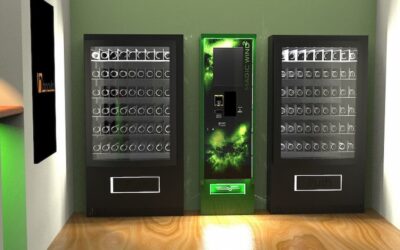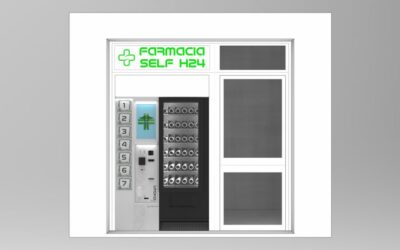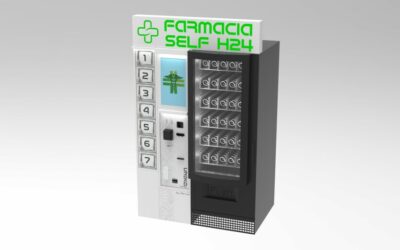The use of CBD among young people
Many are now wondering about the use of CBD among young people which is why we at Harvin thought we would dedicate an article on our blog to this topic in order to clarify any doubts.
The most frequently asked questions are: How do young people relate to the world of legal cannabis?
Do young people or adults consume more cannabis?
Do buyers choose products wisely or are they uninformed about the properties of CBD?
How do they approach sales, do they prefer to buy in shops, via websites or vending machines?
And finally, according to some parents, CBD may have health risks for young people: is this true?
Before answering these questions, it’s important to make a few remarks about the use of CBD among young people, a product that has been legalized in Italy since 2016.
Since then, hemp production has multiplied in the Italian countryside, giving rise to the creation of innovative products of various kinds: bio-plastics, insulating bricks, cosmetic products, herbal teas, flour, pasta, oils and extracts, but above all inflorescences.
Initially, there was a boom in sales among young people, due to the opening of multiple CBD shops that intrigued teens. Unfortunately not without the prejudice that has always surrounded the subject of cannabis and that has aroused quite a few controversies from opponents.
It has to be said that indeed most young people buy CBD through vending machines, sales outlets and specialized websites in order to smoke it for recreational purposes.
Yet, according to European law, legal cannabis can only be sold with a THC content of less than 0.2% and for uses that do not involve the direct consumption of the substance.
In short, light cannabis should not be smoked or ingested for recreational use.
Although the law prohibits the consumption of cannabis flowers by combustion, this is precisely the main purpose for which it is purchased by young people.
Smoking legal cannabis buds is a very different experience from taking cannabis with a higher THC content, but in any case it provides a non-psychoactive experience with relaxing effects.
Parents’ control

About the use of CBD among young people, many parents are concerned that their children may use Cannabis, which is why the FDA – the US government agency that regulates food and pharmaceutical products – has spoken out against CBD, claiming that legal hemp may have a number of contraindications.
Unfortunately, the available studies to us are not long-term, and consequently the occurrence of possible adverse health effects cannot be predicted for some years yet.
It has been shown that a high percentage of THC can pose risks for children and young people whose brain development is still in progress, but this has not been demonstrated for CBD.
However, this is a very remote possibility considering that CBD has no psychoactive effect and only health benefits have been found so far.
The wide range of its positive effects on the organism is well documented and evidence of its efficacy is demonstrated by those who use it, with positive results obtained in chronic pain, mood disorders, neurodegenerative disorders and as an anticonvulsant in the treatment of epilepsy.
Several studies have also shown an anxiolytic effect of CBD, and the reported effects for sleep disorders seem positive.
In spite of this, there are groups of parents who vociferously oppose the legalization of CBD, while others think it was a good idea in the first place to counteract the purchase of uncontrolled drugs on the black market.
In fact, young people often use cannabis with a high THC content, and the introduction of such a product could possibly limit this phenomenon in time.
Data
Speaking of data about the use of CBD among young people, Harvin being an Italian company, we cannot fail to mention the first survey on CBD consumption conducted in our country by MinervaTop, a company belonging to Elita srl based in Udine.
Interestingly, the survey reveals that CBD users in Italy are mainly adults, and that only 4% of frequent CBD users being are between 18 and 24 years old.
The same phenomenon was found in Europe, while it is interesting to observe the data reported overseas.
In America, we analyzed a survey on CBD consumption conducted in 2022 by Single Care, a company made up of a team of mathematicians, statisticians, doctors and scientists who conduct market research, surveys and opinion polls.
According to this survey, analyzing consumption data according to age, the results are as follows:
- 20% of 18-19 year olds use CBD
- 16% of 30-49 year olds use CBD
- 11% of people aged 50 to 64 use CBD
- 8% of people aged 65 and over use CBD
You might be wondering, but how come in America young people are the biggest users of CBD and in Italy it is adults?
The answer is very simple.
Numerous studies conducted in both Holland and America have proven) that making Cannabis high in THC legal has reduced its use.
In fact, legalization has reduced crime and the circulation of dangerous and psychoactive substances.
In Italy, young people are accustomed to turning to the black market and to buy cannabis for recreational purposes, whereas in America, where pot is legal in almost every state, the consumption of psychoactive cannabis has decreased significantly.
This is a phenomenon that should give European governments pause for thought and encourage them to ease prohibition across our continent as well.
Thanks to some data provided by these initial surveys, we have the possibility to outline a profile of the average growshop customer in Italy: these are people over 30 years of age who purchase CBD in search of its beneficial effects on health, often to alleviate chronic pain, anxiety or sleep problems, and generally do so by taking CBD oils or extracts rather than inflorescences.
CBD extracts are products that have a considerable price tag and consequently are not easily accessible to young people.
The survey paints a picture of a country that is well-informed about CBD, where Italians consider products such as oils or extracts to be very useful in everyday life to aid physical and mental well-being.
The idea of wanting to classify CBD as a narcotic substance was then fortunately discontinued as it was in stark contrast to public opinion and the Italians who use it for physical and mental needs rather than for recreational purposes.
On the contrary, in America young people are the largest users of CBD, and it is also interesting to note that only 1% of consumers use hemp inflorescences, while the others prefer oils, tinctures, capsules, gummies and edibles and do not smoke the inflorescences as is the case in Italy.
Americans, thanks to government tolerance of cannabis, are very knowledgeable about the properties of CBD and use it for medicinal rather than recreational purposes, as do young people who use it.
We can therefore say that those who were concerned about the use of CBD among young people and who feared that the legalization of cannabis would be a step towards a more general legalization of soft drugs, with a consequent loss of the youth population, were very mistaken.
The main users are former smokers of psychoactive cannabis who for various reasons have stopped using the substance and have come to prefer a similar product but with a very low THC content.
This is not the case for young people in Italy, who continue to seek out the product on the black market to consume it with friends for recreational purposes, in search of the classic high obtained from the substance.
The role of vending machines
It should be said that indeed most young people purchase CBD flowers via vending machines and websites, unlike adults who prefer physical shops.
In addition to the fact that young people are more inclined to choose cutting-edge sales methods, purchasing via vending machines and websites also allows greater privacy and accessibility to buy the product at different times of the day and with ease, away from the often prying eyes of adults.
Moreover, as we pointed out in a previous article, vending machines can have a social function and promote education about cannabis for both young people and adults.
For example, Harvin’s Magic Touch Screen series has a high-definition screen that can give all the information about the products, their contents, their efficacy and the benefits derived from their use, informing the consumer before purchase; vending machines are therefore a powerful communication tool that Harvin offers to its customers.
Generally, those who buy vending machines prefer not to place them near schools or sensitive areas where there are minors, who in any case would not be able to buy legal cannabis as well as tobacco.
At first glance, vending machines might seem like an easy way for young people to purchase these products, but in reality this is not the case since legal cannabis vending machines work just like tobacco vending machines: you have to insert a valid ID and minors cannot buy.
In conclusion, according to these reflections and statistics we can confidently state that there is no real youth problem related to cannabis light, but rather related to the illegal product that being uncontrolled can create serious health problems, and one should be much more concerned about this than about CBD.
Did you like our article?
Follow our blog for all the updates!
Also follow our instagram, facebook and youtube pages to find out all the news from the Harvin world.



